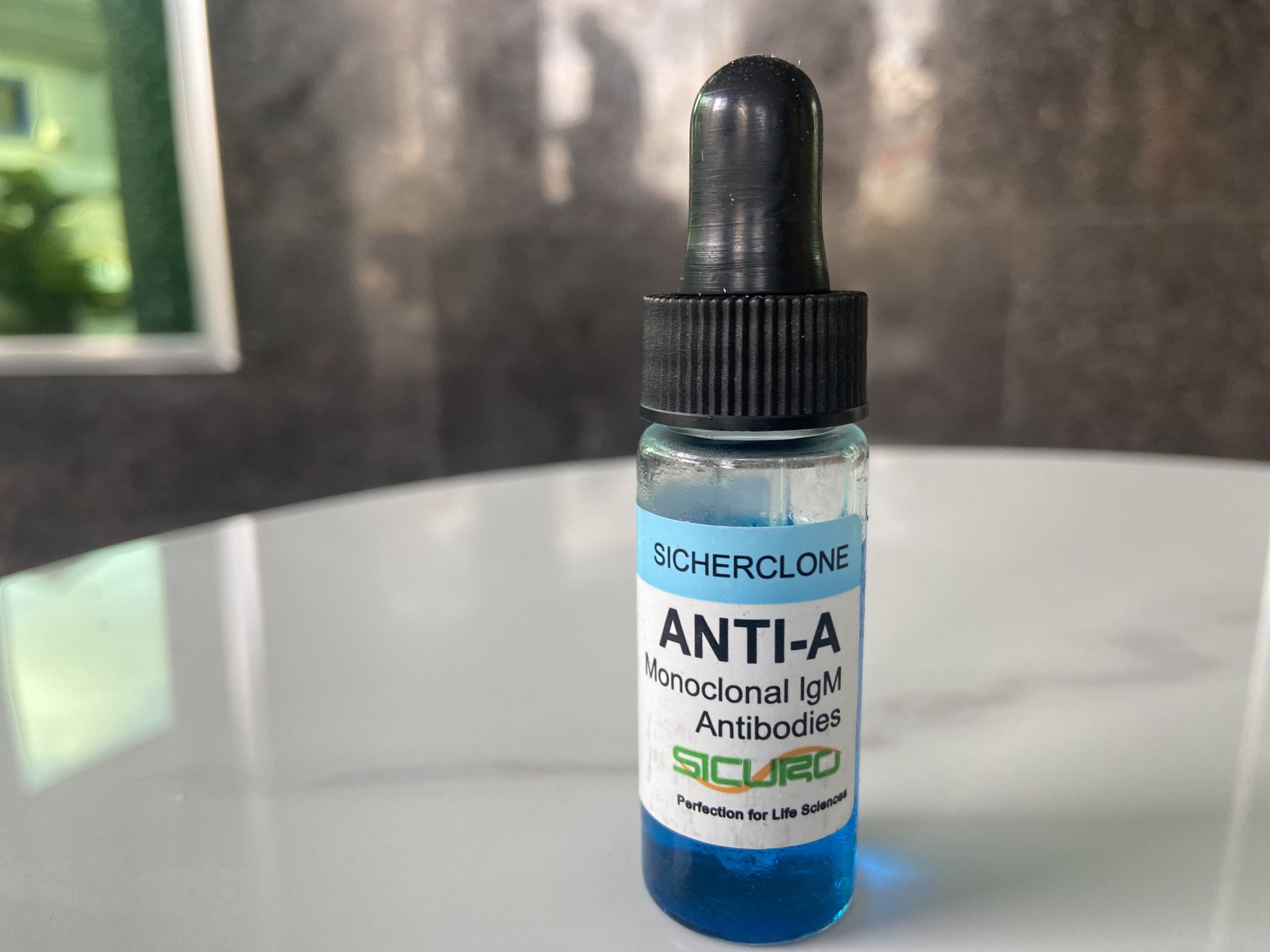19 East-West Road, Portharcourt. Nigeria

Blood Grouping Anti-Sera Reagents
Download resources

Compatible Products:
-
Sicuro Products: All Chemistry Analyzers
-
Others: Open Analyzer Systems
In 1900, Landsteiner showed that people could be divided into three groups (now called A, B, and 0) on the basis of whether their red cells clumped when mixed with separated sera from people. A fourth group (AB) was soon found. This is the origin of the term "blood group". The most frequently occuring antigens on the red cell surface are the antigens of the ABO system. These antigens are synthesized during foetal development by the sequential addition of sugar residues to a common precursor substance. Galactose and ABO Antigen Precursor Substance Specific sugars, attached to the red cell membrane in unvarying linkage conformations, determine ABO antigenic activity. Galactose resides at the end of this specific sugar chain. This configuration constitutes the ABO antigen precursor substance. Another sugar, fucose, must be attached to the galactose in a specific configuration for further antigen development to take place. This "galactose-plus-fucose" configuration has antigenic activity called "H".

"A" Antigenic Activity.
Without H substance, there is no way for additional sugar attachment to take place. Additional sugar attachment is necessary for the development of and A and B antigenic activity. Therefore, without H substance there can be no A and B antigens developed. Once H substance is developed, the addition of the sugar N-acetylgalatosamine to the terminal position of the chain gives the molecule "A" antigenic activity. .
"B" Antigenic Activity.
The addition of galactose in the terminal position of the "galactose-plus-fucose" configuration give the molecule "B" antigenic activity


"D" Antigenic Activity.
SICHERCLONE Anti-D uses a blend of monoclonal IgM and IgG anti-D which has many distinct advantages. It possesses the ability to detect in one test the weakest of D types. The combination of IgM and IgG antibodies has a double and supportive effect in determining D type. The essential difference between IgG anti-D and IgM anti-D is size. IgM anti-D is five times larger than IgG anti-D. IgM antibodies have ten antigen binding sites whereas IgG antibodies only have two. It is the size of the IgM anti-D antibody, which allows it to span the distance between different red cells and react with their D antigen sites and then agglutinate these red cells.

Main features
Murine monoclonal antibodies specific for various human antigen components have proved to be very satisfactory for grouping purposes. The SICHERCLONE range of ABO antisera manufactured from murine monoclonal antibodies are suitable for use by slide and tube methods.
-
Ultimate Avidity
Clear, distinct visible agglutination.
-
High Titre
Maximum sensitivity, detecting even weak groups easily.
-
Maximum Specificity
No contaminating antibodies enhancing 100% specificity
-
Flexibility
Suitable for slide, tube, micro-titration plate and automated methods.
Talk to our product experts

Contact Us
-
-
19 East-West Road, Portharcourt. Nigeria
Open Hours
Mon – Sat: 8:00 am to 6:00 pm
Sunday: Closed
Products

About Us

Newsletter
Subscribe our newsletter to get our latest update & news.
Customer Service
© Copyright 2025 by SicuroBio Engineering